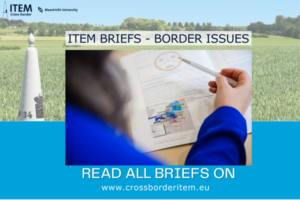EC proposal for a Directive COM(2023) 516/4 on a European cross-border association: Citizens will get an instrument to establish associations across the border; Finally!
Last September, the European Commission adopted a proposal for a Directive on European cross-border associations (COM(2023) 516 final). “The proposal aims to improve … the conditions for establishing and operating European cross-border associations (ECBAs)”. According to the Commission, the current situation for non-profit organizations (NPOs) engaged in cross-border activities is one of “legal uncertainty”, “different administrative procedures”, and “financial obstacles”. The proposal seeks to: “harmonize restricting provisions”, “provide a clear and predictable framework” and “allow flexibility for member states”.
Cross-border cooperative instruments
The Commission admits that: “there is little coordination among Member States to facilitate cross-border economic activities of non-profit associations [and that] such coordination, appears unlikely in the near future.” The various cross-border cooperative instruments developed by the EU such as the European Grouping of Territorial Cooperation (EGTC), the European Cooperative Society (SCE), Societas Europaea (SE) are not intended for non-profit, non-governmental organizations. ITEM advised on establishing such cooperative instruments and is well aware of the problems NGOs face in the EU with (co)operating across national borders and contributing to a variety of transnational socio-economic developments, including (according to the Commission) the twin green and digital transitions.
But, can this directive facilitate cross-border activities of associations where citizens come together to pursue common activities beyond a commercial interest? Already in 1991, the Commission proposed a Council Regulation (EEC) on the Statute for a European association (COM(1991)0273. Member States didn’t support such an instrument. It explains the Commission’s reference to subsidiarity and its careful consideration of member state interests, with respect to such issues as taxes, registration, and representation. The “results of the ex-post evaluations, stakeholder consultations, and impact assessments” provide an insightful overview of the various stakeholder standpoints.
Legal forms
A dedicated and effective vehicle for citizens’ and non-profit organizations’ cross-border cooperation is badly needed. The idea is, to establish in each Member State a new legal form of non-profit associations specifically designed for cross-border purposes (the ECBA), next to existing national legal forms. Even more important, allow automatic recognition of this new legal form across the Union once an ECBA is registered in one Member State. Organization matters! Certainly, across the borders. The legal personality and organizational set-up can determine the scope and efficiency of cross-border cooperation. However, only the future can tell whether this Directive will take NGOs’ cross-border activities to the next level of cross-border cooperation and whether this Directive will generate more and better economic and societal value in our cross-border region. The German MEP Sergey Lagodinsky is the rapporteur for the negotiations in the Parliament. He says that “democracy does not end at national borders: civic engagement in associations is at the heart of a vibrant democracy and the basis for our European future”. Indeed: why not fight poverty, climate change, racism, and/or environmental pollution together in cross-border associations? This question is, in my opinion, particularly relevant to those living, working, and cooperating in cross-border regions.
Also read
-

Choosing to work or live in another country often does not happen overnight. Obtaining information beforehand is indispensable.
-

Our pensionland is in a state of flux; especially when it comes to the regulation of cross-border pensions. On 17 January, the Lower House debated the Future Pensions Act (
-

At the end of 2022, the House of Representatives instructed the Dutch government to take measures against the influx of international students in higher education.
